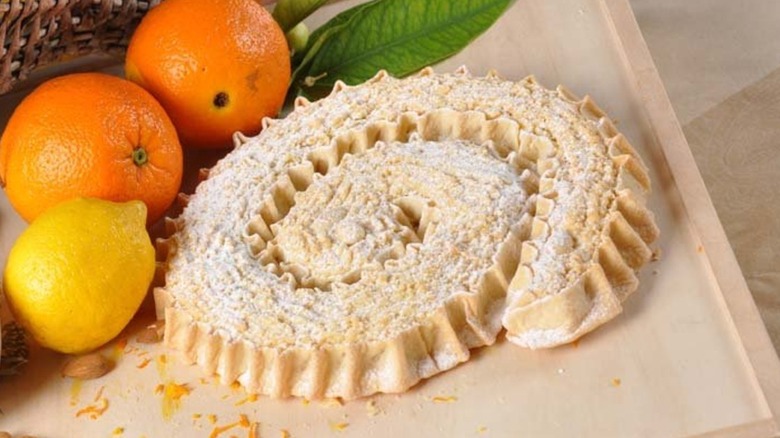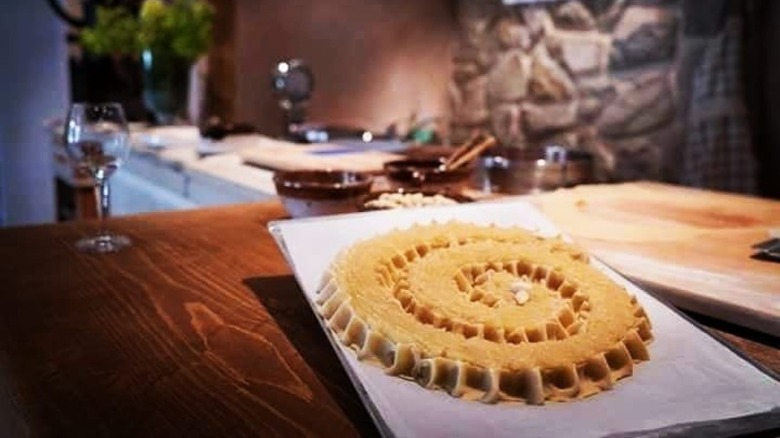Rab Cake: The Croatian Dessert At The Center Of A Local Legend
To someone glancing at a map, the island of Rab probably doesn't look like much. At roughly 91 square kilometers (that's 35 square miles for imperial-minded folks), it's slightly smaller than Disney World, and its population sits below 10,000. But this rocky strip of land that rises from the Adriatic Sea is steeped in more history than you would ever imagine. Over the centuries, it's changed hands from one European power to another, successively ruled by the forces of Greece, Rome, Croatia, Venice, Austria, France, Italy, and Yugoslavia, before becoming part of Croatia once more, which it remains to this day.
Through these turbulent years, the people of Rab have placed a unique cultural stamp on the world. Today, the island is known for its burgeoning tourism industry, the exemplary Romanesque architecture of its main city (which is also called Rab), and most of all, a very particular dessert known as Rapska torta — Rab cake.
What is Rab cake?
When you think of a dessert cake, you probably picture layers of a spongy crumb covered in icing, but Rab cake is completely different. It is composed of a crust and a filling, more akin to a pie or tart than a birthday cake. The filling is the focal point of the dish and is made from ground almonds, eggs, sugar, lemon and orange zest, and Maraschino liqueur. It is somewhat similar to almond paste and marzipan. The crust contains flour, butter, water, and sugar, a bit like shortbread, but it adds eggs for a sturdier dough while Maraschino liqueur makes another appearance to elevate the flavor.
Rab cake is usually shaped into a spiral like the shell of a snail, but you might encounter other shapes, such as hearts, horseshoes, or even letters and numbers. The whole glorious affair gets a generous dusting of powdered sugar before it is served.
The Rab cake legend
Local lore says that Rab cake was invented in 1177 for a very special guest: Pope Alexander III. As the story goes, the pope was aboard a ship traveling on the Adriatic Sea when a storm hit, and they were forced to take shelter. The nearest port was on the island of Rab, and it just so happened that the locals had recently finished renovating the local church — the Cathedral of the Assumption of Mary — so the pope stayed to bless the site. The Benedictine nuns of Rab wanted to make the pope a special dessert as a show of gratitude, and in trying to replicate the traditional sweets of the pontiff's homeland of Siena, Italy, they created something brand new and unique.
A different version of the tale has the pope introducing the dish to Rab.
The original recipe for Rab cake has been preserved in the archives of St. Andrew's nunnery, home of the Benedictine nuns who are believed to have invented the dish. However, the recipe includes no measurements, and for generations, it was passed down from one nun to the next. The cake was originally reserved as a dessert for the wealthy, served on special occasions. However, Rab cakes are now a popular souvenir for international travelers to the island.


